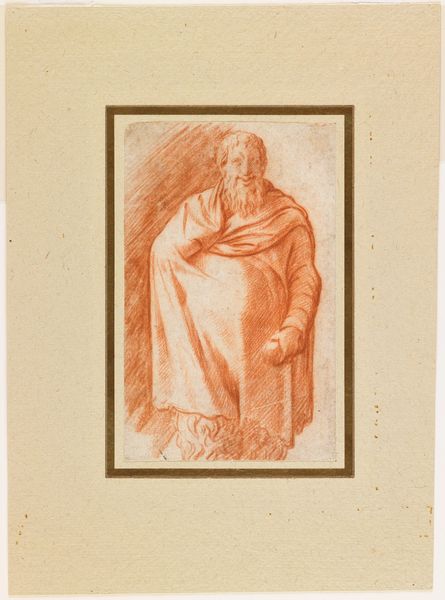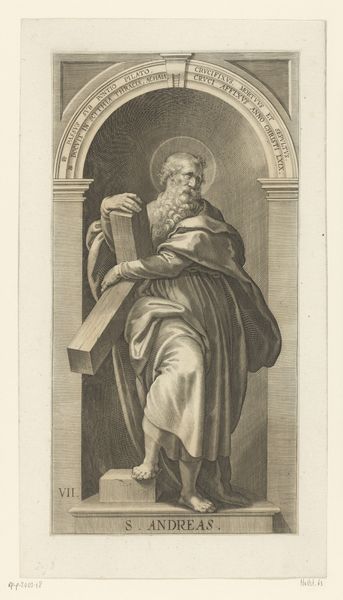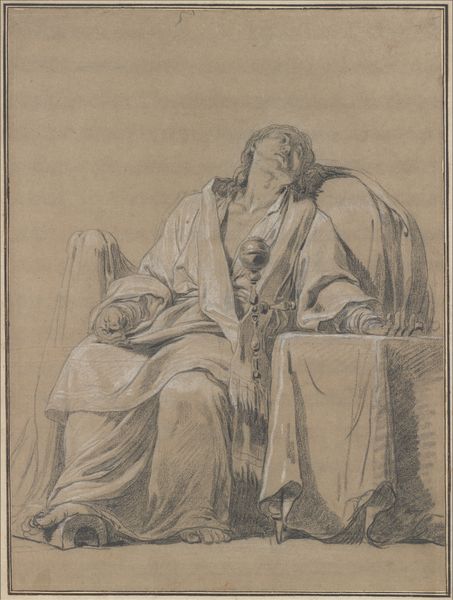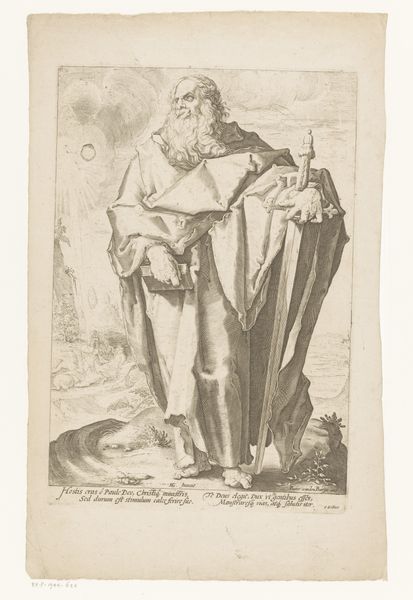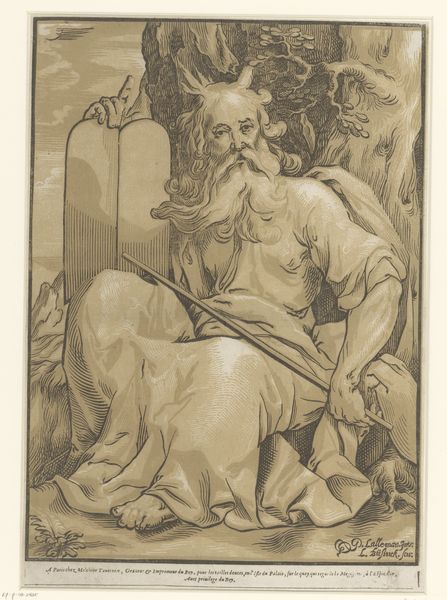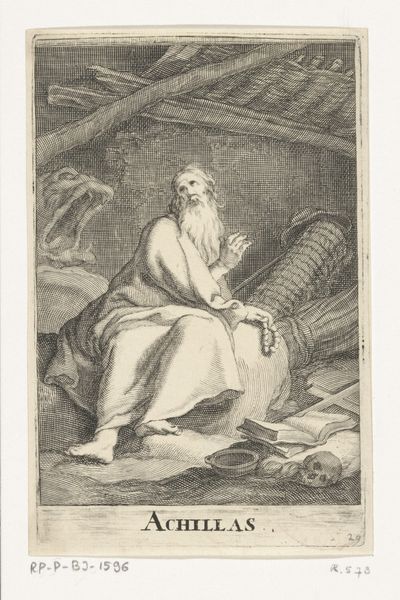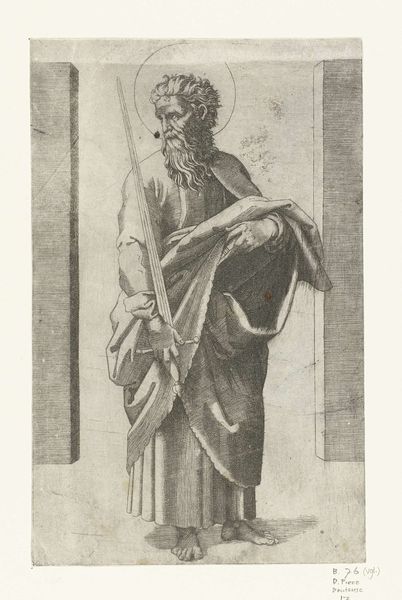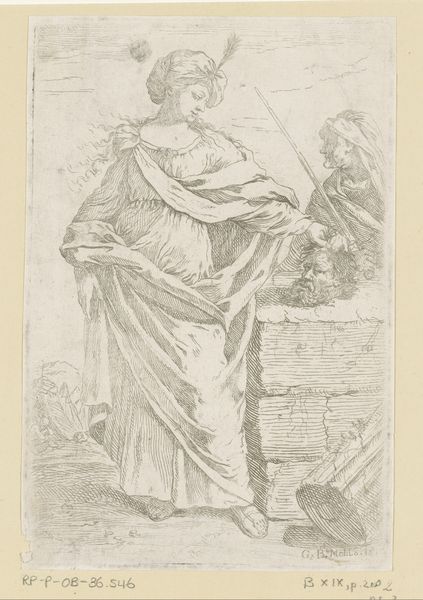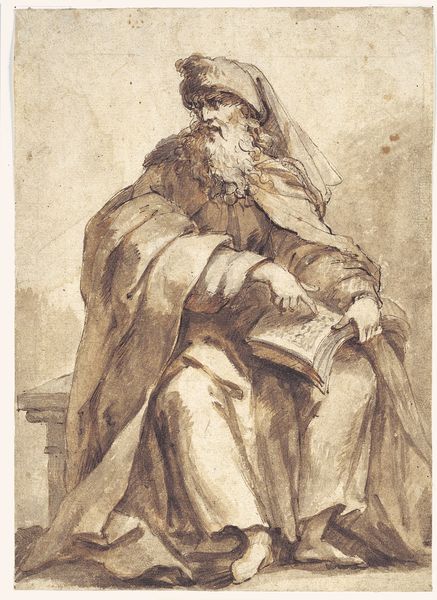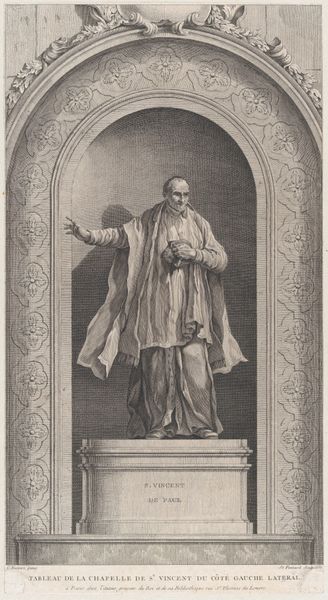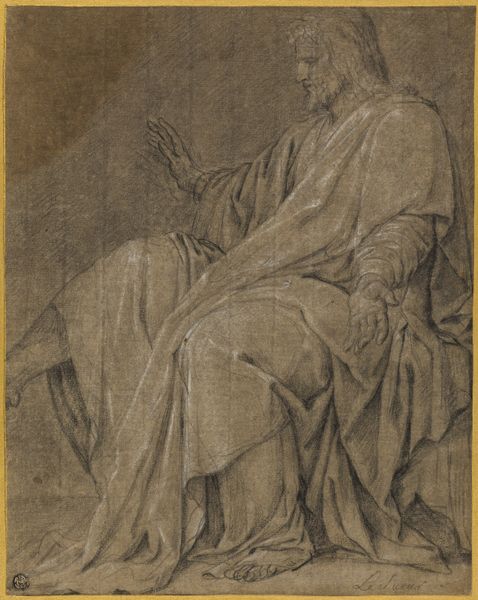
drawing, print, engraving
#
drawing
# print
#
mannerism
#
figuration
#
history-painting
#
engraving
Dimensions: sheet: 7 13/16 x 4 3/4 in. (19.8 x 12.1 cm)
Copyright: Public Domain
Curator: This is Lambert Suavius' "St. Paul (after Lombard)," likely produced between 1530 and 1576, a moment steeped in the elegant complexities of Mannerism. The piece, rendered through engraving, presents the iconic figure of St. Paul. Editor: It’s interesting... There's an almost mournful quality to the work. He seems burdened by the book he holds, and even a little bit slumped and unsteady in pose. It feels like a challenge to traditional depictions of sainthood. Curator: Observe the intricate interplay of line and shadow. Suavius uses dense hatching to sculpt Paul's form, imbuing it with a palpable three-dimensionality. The lines themselves create a complex visual web, drawing the eye across the surface and emphasizing form above all else. Editor: And beneath him, we have discarded weaponry, as though to state "I put down arms for faith", a fascinating inversion, considering how faith has often been a rationale for war and violence throughout history. Who truly gets to interpret sacred text, and whose violence has it been made to justify? Curator: The choice of engraving as a medium is also key. It allowed for the wide dissemination of images during the Renaissance, a critical aspect in the spread of artistic and religious ideas, but is this really the case with Paul? This figure feels removed, austere... distant, in a way that diverges from the propagandist use of art that it could have had. Editor: Maybe it serves to remind us of the weight of the scriptures, and their interpretations, on human history. To bear them is to wrestle with meaning, responsibility and, given St. Paul's biography, incredible transformation. It asks, perhaps, can dogma really serve a purpose? Curator: Precisely. Suavius masterfully manipulated the artistic resources available to him. By giving preference to this medium's intrinsic properties, he elevates this above the politics of the time. Editor: I think it roots the ideas embodied here not in an ivory tower, but in the messy realities of political turmoil and spiritual struggle. Curator: A divergence in views, certainly. What stays constant is our experience of the material properties as one appreciates Suavius’ engraving of St. Paul. Editor: And for me, a new set of questions concerning what St. Paul stood for. Thanks to pieces like this, our understanding continues to change.
Comments
No comments
Be the first to comment and join the conversation on the ultimate creative platform.
